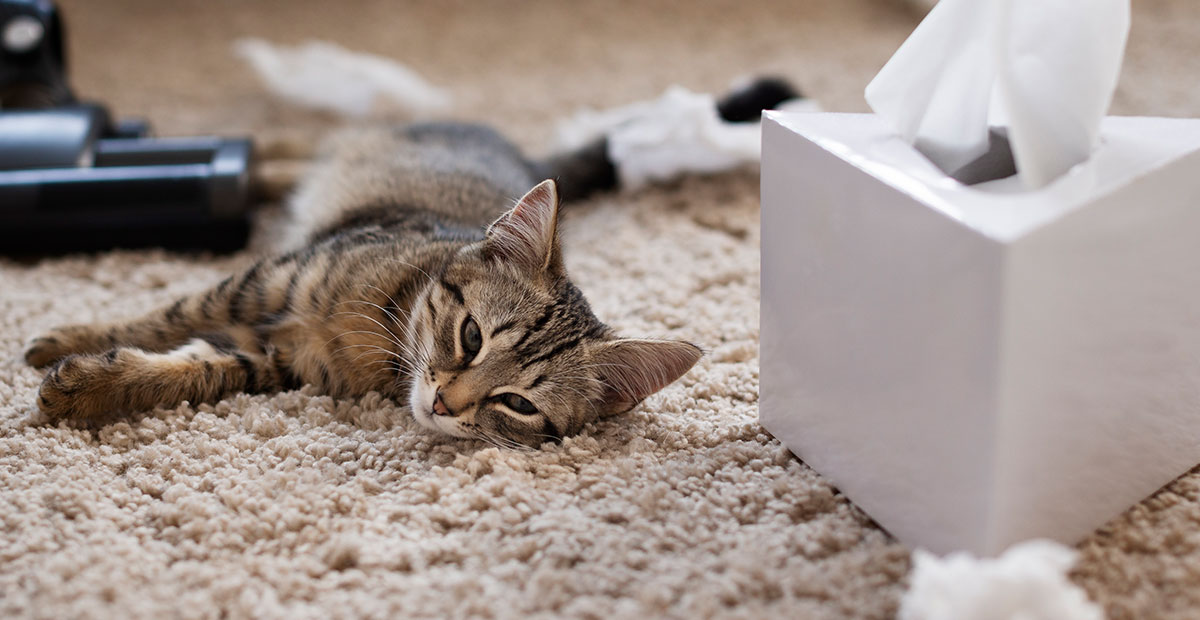
Owning an adorable four-legged fur-ball is a joy in itself. Felines are thought to be low maintenance pets that can be left alone at home for hours. Cats – as pets- are the best choice for people who have a busy lifestyle because they can act independently for themselves. However, as a cat owner, you will need to attend a number of tasks involved in taking care of your feline friend. It entails everything from clipping their claws to making sure that they are consuming the right type of cat food. To keep them busy accessorize their surroundings with toys and allocate separate places for them to play and sleep. It is advisable never to neglect indistinct changes in behavior and body language to help avoid any health issues.
Having a litter box is vital if you have a cat that stays indoors. You need to be conscious of your cat’s need for privacy in all things about doing their business, therefore, place the litter box in a quiet, private place. Cats are innately clean pets and like to have their business well contained and attended to. But your snuggly friend can be your worst nightmare if you find your couch or your favorite chair soaked with cat-urine. Cats do not generally pee outside the litter box. It may be a call for attention to an underlying problem. If you start to notice such behavior, you must determine and identify the reasons associated with this behavioral change in your cat.
When there’s a litter box problem, the very first thing a cat owner should do is take the kitty to the vet for a thorough physical exam. Some symptoms that your cat might need an urgent vet appointment are:
Inability or Straining to urinate
Blood spots in the urine
Increased Water Consumption
Lethargy
Vomiting
All of these symptoms hint at a urinary tract infection (UTI) and if the condition is not treated quickly, it may lead to complete obstruction of the Urethra which may result in Kidney failure, the worst-case scenario. Do not assume a problem is behavioral without getting your pet kitty examined by the veterinarian. Apart from infections, cats can also experience other issues that interfere with urinating. Urinary blockages are fatal and can kill a cat in a matter of days. For this reason, you should make sure to rule out medical reasons of any sort before looking at other possible causes.
Cats are inherently courageous; by the time they show pain, a simple problem may already have escalated. Therefore, if your cat shows any litter box trouble, take it to the vet immediately and always discuss it with your veterinarian or a veterinary behaviorist before giving your cat any medicine for a behavioral problem.
The most common reason why your kitty may not be using the litter box may have to do with how frequently you clean it. Cats are habitually clean animals and will not want to use a dirty litter box. Therefore, you should make an effort to clean the litter box as often as possible, ideally, after each use. If possible, scoop the litter box twice a day and replace the litter often. Scrub out the box with a mild soap at least once a week. Do not use bleach or ammonia-based products; instead, use unscented anti-bacterial soaps to clean the litter tray. Sprinkle a bit of baking soda in the fresh litter or use a charcoal filter to address the odor problem. Cats are very meticulous, so you’ll want to keep the litter box as clean as possible to encourage the use. Replace your litter box every year. Keep in mind that it should be spacious for the cat to move freely and bury its waste.
Your feline friend may not be accustomed to change, so if you have to move a box from an established spot, do it gradually to give your kitty time to adapt. It’s not good to put the litter box in an area that provides or retains bad odors, like near an open dustbin or by a smelly pipe. Likewise, do not place the litter box near loud household appliances; the sound may scare the cat. To find a preferred spot, try placing the box in various areas around the house. The cat will use the litter box in the location where it feels the most comfortable and the safest. In a multi-cat home, place a litter box in every cat’s preferred area and don’t have them queued up in one place. A cat may resist using a litter box because it is scared to cross the way of another cat to reach its box in the room.
Like other pets, a cat may develop a preference for where it likes to defecate and may avoid locations it doesn’t like. Consequently, it might avoid using the litter box if it’s in an area it dislikes.
Some cats are very relaxed about sharing food bowls and litter boxes. Others may want to have their own because cats can be quite territorial. So if you own more than one cat or have recently adopted a new kitty, give each one its litter box to avoid litter box problems. It is advisable to get one litter box more than the number of your cats as a lot of cats prefer defecating in one box and urinating in the other.